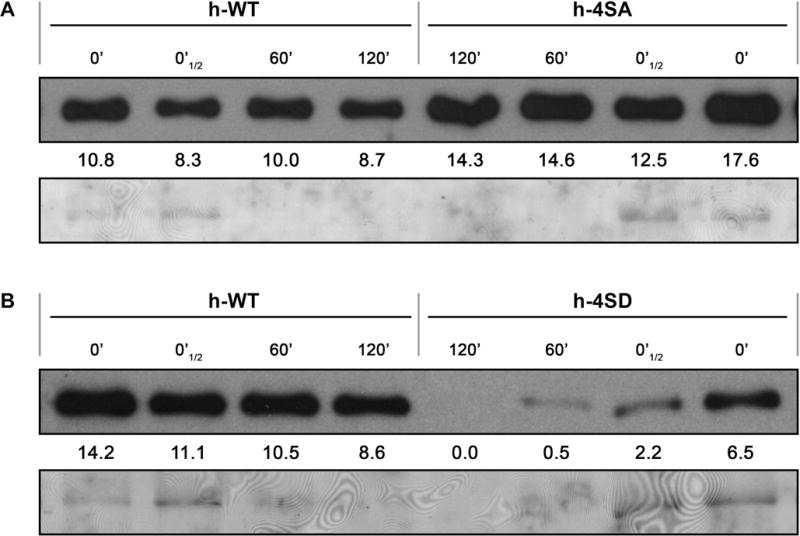Fig. 9.

Stability assay of PPV CP, either wild-type (h-WT) or bearing phosphorylation-preventing (h-4SA), or -mimicking (h-4SD) mutations. Systemically infected tissue from N. benthamiana plants inoculated by hand-rubbing with infected extract, was collected at 21 dpi. After verifying by RT-PCR and sequencing that viral progeny did not hold unintended mutations, native extracts were prepared in phosphate buffer and CP accumulation was assessed by immunoblot analysis immediately after extraction (0′ and 0′ ½, in which a half amount-sample was loaded) or after incubation for the indicated times. The stabilities of h-4SA and h-4SD CPs were compared with that of the wild type CP (h-WT) in panels (A) and (B), respectively. Intensity values of the CP bands were calculated with the Quantity One 1-D software (Bio-Rad, USA) and are shown below each lane. Blots stained with Ponceau red showing the RuBisCO protein are included as loading control.
